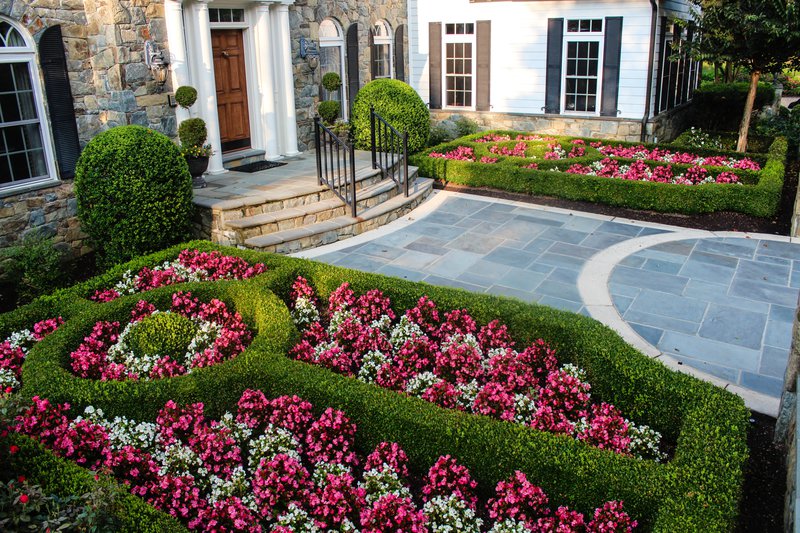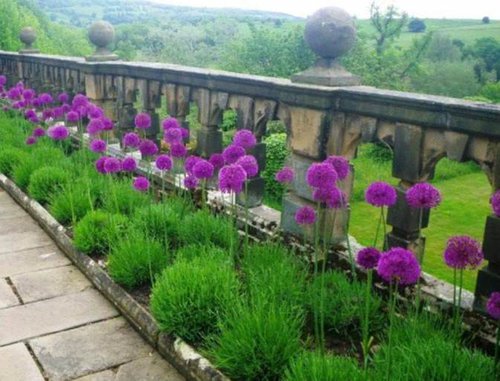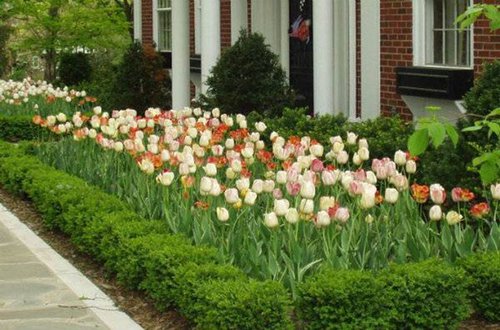
What to Plant in Your Spring Beds
Put those colors on display to welcome back the warm weather.
Spring is the time to transform your property from bland to glam. This is the season when we shake off winter’s gray, dull days and add pizzazz and punch. Color dresses up the scene and wakes us all up from our winter slumbers.
Adding color to your home landscape with plants that have bountiful blooms, lovely leaves in rich hues, and other variations of visual appeal like berries can do just the trick to perk up your garden.
Let’s explore some flower bed ideas that can get you excited for the new season.
Try These Spring Flower Bed Ideas
A great flower bed design will include a mix of perennials, annuals, bulbs, shrubs, and ornamental grasses that add solid base colors and textures to your landscape. You want to ensure you have brighter, bolder shades that complement each other, so as one plant stops blooming, another greets you with a new color.
These ideas should give you some inspiration to keep your garden gleaming.

Include Perennials and Bulbs In Your Garden
While annuals are amazing additions to your spring flower beds, adding brilliant and necessary pops of color, perennials are those tried-and-true additions that come back year after year and grow with your landscape. Perennials bring consistent blooms, intriguing texture and even fall color and winter interest.
Perennials can become your base plants. Adding annuals for earlier color can bring additional texture and brightness. Then you can layer your garden further with bulbs. Planting bulbs in fall brings the earliest color to your spring flower beds, extending your season. After all, who doesn’t want to get a jumpstart on spring?

Prioritize Plant Location
Knowing where to put your best color is a big part of flower bed design.
Your entryways, for instance, make the perfect places for punchy, powerful plants. This color draws the eye in. In your front yard, spring color can amp up your curb appeal.
In your backyard, you can group color near your patio or areas where you will frequently entertain to elevate your guests’ overall experiences.
Go Big With Annuals
Sprinkling annuals here or there can certainly add some color, but your annuals can get lost this way.
You want to go big when it comes to annual color. If you plant them in a larger, grouped fashion – whether you’re using one solid color or a mix of complementing shades – you’ll make a bold statement.

Add Containers For Additional Color
Want even more color? Add containers to front entryways, near front gates, on patios or decks or along walkways.
You want to fill your containers with spillers, fillers and thrillers. Spillers dangle over the edges, thrillers rise up for height and draw the eye in, and fillers add additional color and texture into the bare areas. Even the containers themselves can add great color. Think: sculptural containers or urns.
Think Beyond Spring
To have a colorful garden throughout the year, you can start with spring, but you also have to think about the next season. This way you can have multiple seasons of color that keep delivering something eye-catching, never leaving you longing for more.
This strategy is focused on bloom timing. You don’t want to have random blooms; you want consistency. When one plant has reached its peak, you want another one ready to take its place with a new hue to keep your garden interesting.
There are so many flowers out there that the idea of searching for the best flower bed ideas for you can be overwhelming. Bringing in a landscape designer that can plan out multiple seasons of color can be just the thing you need. You can discuss your color preferences and then they can rotate your color throughout the year so as one season’s glory fades, you have another springing into bloom for a more robust garden.
Looking for fun ways to dress up your spring flower beds? We’d love to help you achieve a look that sets your landscape apart and has the neighbors asking where you got those amazing flowers. Learn more about gardens we’ve designed here or contact us for a consultation.





